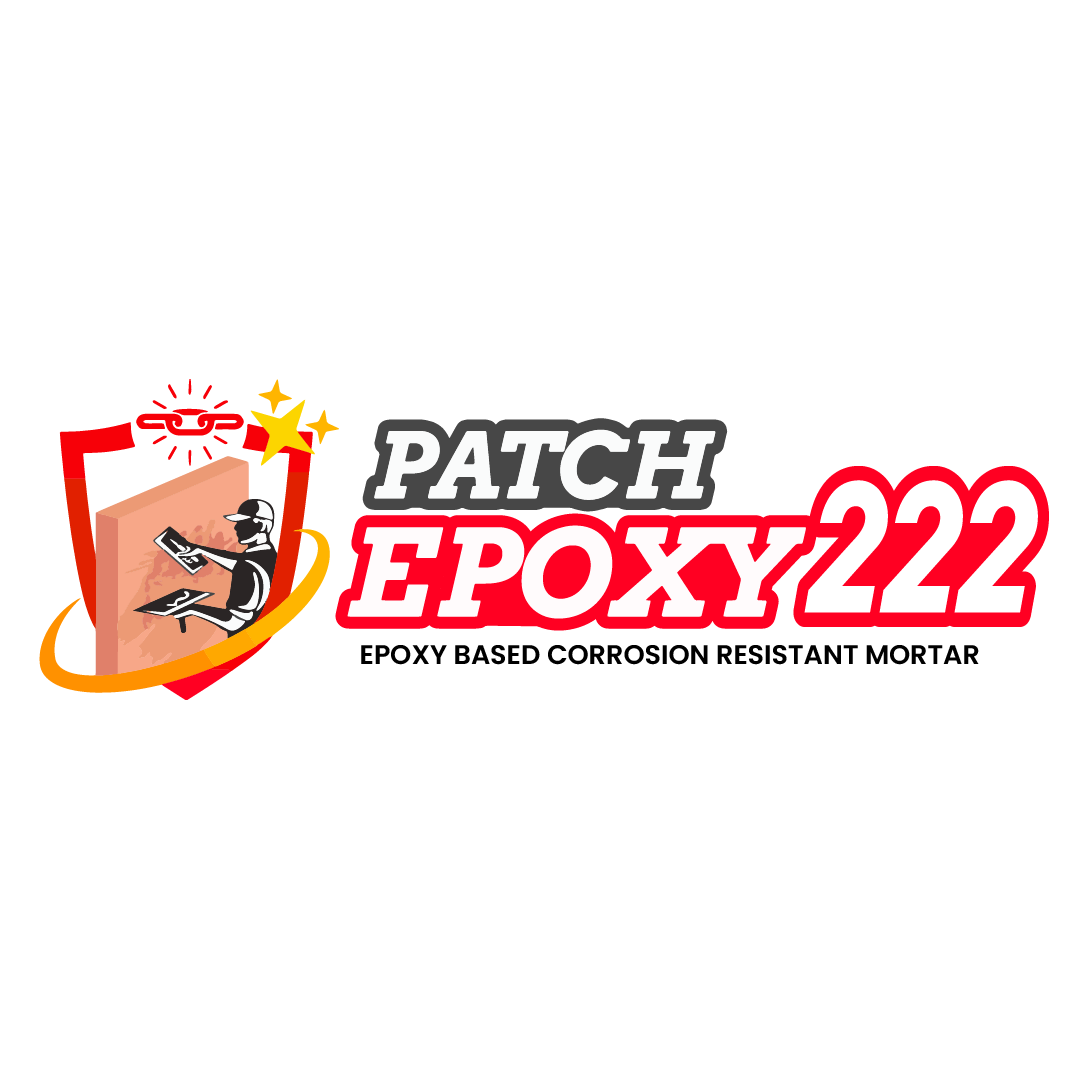Patch Epoxy 222
Patch Epoxy 222 is a three component, solvent free epoxy resin, high strength corrosion resistant mortar. It is a high strength material with no shrinkage. It is suitable as a bedding for repair and fresh applications of both horizontal and vertical surfaces. It is ideal for industrial walls and floors, cracks arising in roads, bridge decks, patch repair works, airport runways, sidewalks, parking floors, precast units, manhole benching etc.
Patch Epoxy 222 is a three component, solvent free epoxy resin, high strength corrosion resistant mortar. It is a high strength material with no shrinkage. It is suitable as a bedding for repair and fresh applications of both horizontal and vertical surfaces. It is ideal for industrial walls and floors, cracks arising in roads, bridge decks, patch repair works, airport runways, sidewalks, parking floors, precast units, manhole benching etc.
ADVANTAGES
- Solvent free.
- Excellent chemical resistance.
- Can be used as a bedding mortar and structural repair mortar.
- Rapid hardening.
- High mechanical strength.
- Curing is not affected by high humidity.
- Abrasion and impact resistant.
- Vibration resistant.
TECHNICAL DETAILS
|
Property
|
Test Method
|
Value
|
|
Component
|
---
|
Three: Part A: Base PartB: Hardener
Part C: Filler
|
|
Mixed Form
|
---
|
Mortar
|
|
Color
|
---
|
Grey
|
|
Mixed Density
|
ASTM D 1475
|
1.85 kg / Ltr ± 0.05
|
|
Pot life
|
---
|
45 ± 10 mins
|
|
Compressive Strength
|
BS 6319-2
|
85 N/mm2 @ 7 Days
|
|
Flexural Strength
|
BS 6319-3
|
20 N/mm2 @ 7 Days
|
|
Tensile Strength
|
BS 6319-7
|
12 N/mm2 @ 7 Days
|
|
Bond Strength
|
ASTM D 4541
|
>2 N/mm2 @ 7 Days
|
|
Application Temperature
|
---
|
+5°C to +40°C
|
|
Chemical Resistance
|
---
|
Resistant to a range of Alkalis, Solvents, acids, fuels etc. Please refer to the chemical resistance chart.
|
Typical Results under laboratory conditions
SURFACE PREPARATION
Cut back edges at right angles avoiding feather edges to a depth of at least 5mm. Surfaces should be dry, clean, free from standing water standing water, grease, curing compounds, mold oils and loosely adhering particles. Cement laitance should be removed by mechanical means. Roughen surfaces with chipping to ensure good bonding. Steel surfaces should be grit blasted to white metal.
MIXING AND APPLICATION
Empty the entire contents of Filler into base container and mix thoroughly with a slow speed heavy duty drill attached with a mixing paddle for 5 minute. Slowly add the Hardener into the mixed epoxy resin and filler paste and continue mixing until a uniform mix is achieved, addition of water in the mix should not be done to adjust consistency of the material. Once material is mixed properly, as per the requirement, application should be done using the appropriate tools. For large volumes, apply in layers ensuring the previous layers have hardened and cooled. Application thickness of the material can be anywhere from 3mm to 18 mm in a single layer.
PACKAGING
Patch Epoxy 222 is available in Kit Forms:
16 KG Kit Part A 4 KG Part B 2 KG Part C 10 KG
HEALTH AND SAFETY
Patch Epoxy 222 is not regarded hazardous for transportation. Do not reuse the packaging and dispose them off as per local rules and regulations. Gloves and suitable masks can be worn during application. Please refer to the MSDS of the product for further health and safety information.
CHEMICAL RESISTANCE CHART FOR PATCH EPOXY 222
|
Chemical
|
Resistance
|
|
Acetic Acid 99%
|
NR
|
|
Acetic Acid 33%
|
1 day
|
|
HBr 47%
|
Excellent
|
|
HCl 12%
|
Excellent
|
|
Nitric Acid 57%
|
NR
|
|
Nitric Acid 19%
|
Excellent
|
|
Sulfuric Acid 98%
|
NR
|
|
Sulfuric Acid 33%
|
Excellent
|
|
ECH 50% in water
|
NR
|
|
DETA 50% in water
|
1 day
|
|
Toluene
|
Excellent
|
|
Petrol
|
Excellent
|
|
Lactic Acid
|
Good
|
|
Sodium Hydroxide 50%
|
Excellent
|
|
Water at 70⁰C
|
Excellent
|
|
Sodium Chloride 30%
|
Excellent
|
|
Methanol
|
NR
|
|
MEK
|
NR
|
|
MIBK
|
Excellent
|
|
Key:
Excellent: < 5% 80-day mass change
Good: 5-10% 80-day mass change
1-day: < 10% 1-day mass change
No Resistance: > 10 % 1-day mass change
|
NOTE:
If printed packaging not available, neutral packaging with label. Lot number and manufacturing date to be stamped at the back of each packaging.
